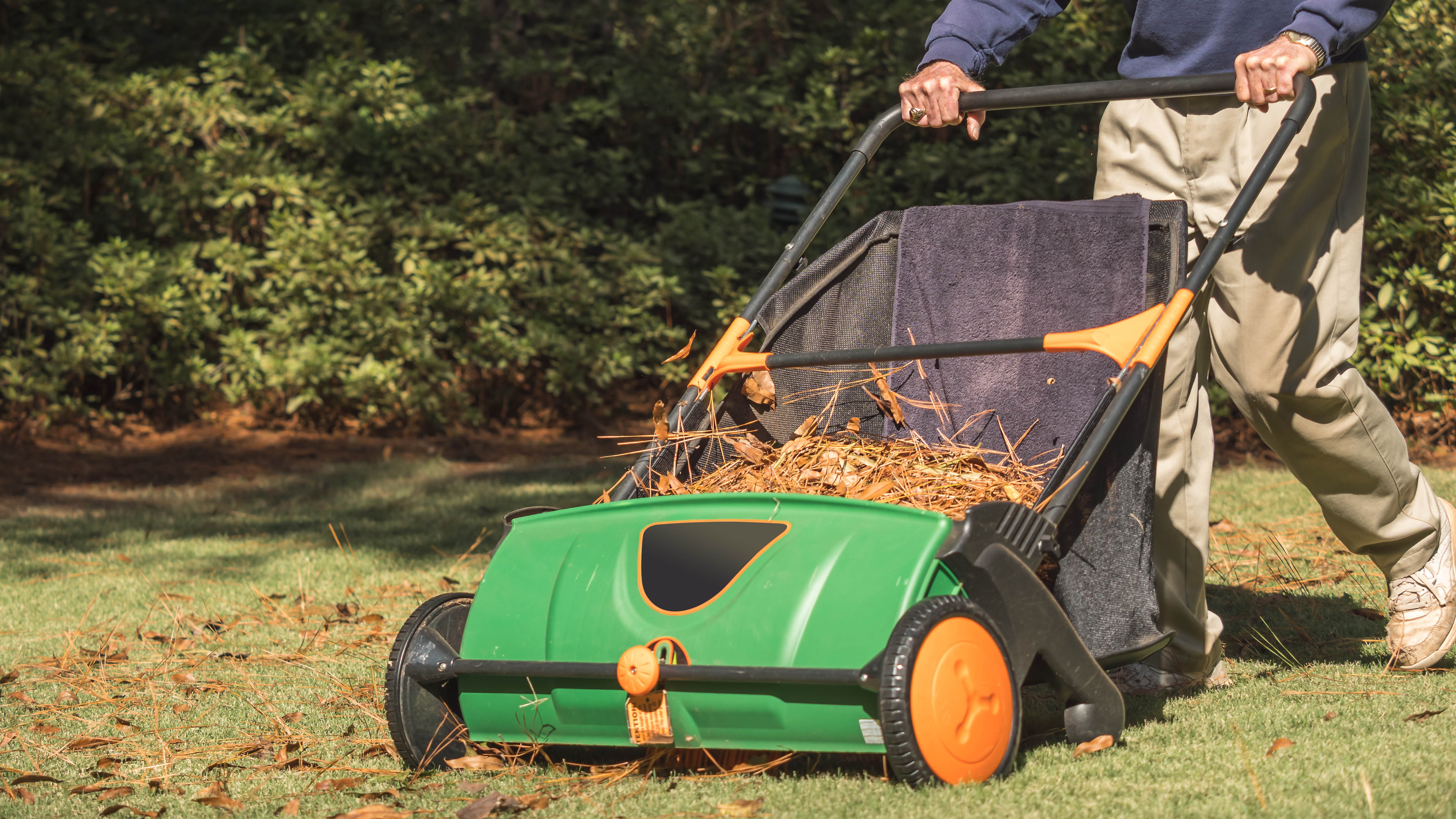How to rake leaves the easy way — 7 tips and tricks
Here’s 7 tips to make raking leaves easier

If your backyard is covered with leaves, you’ll probably want to know how to rake leaves the easy way. This is especially the case during fall months, when you’ll constantly have leaves, branches, foliage and other debris to manage.
In addition, raking leaves is an important part of lawn care to ensure your grass stays healthy and greener for spring. A thick layer of fallen leaves can suffocate the grass blades, depriving it of sunlight and other nutrients. What’s more, the damp conditions provide the perfect breeding ground for lawn diseases and pests. That’s why it’s important to remove leaves as soon as possible; otherwise, you'll need to read our guide on how to revive dead grass in the future. Plus, raked leaves can be used for compost or mulch, which will save you money in the long-run.
While working a rake to remove piles of leaves can seem a tedious and time-consuming chore, it doesn’t have to be. Luckily, there are some useful methods to help you rake leaves in less time, and maintain a healthy lawn. So, if you want to know how to rake leaves the easy way, check out these tips and tricks.
Just be sure to find out the different types of rakes suitable for your yard. Bear in mind, fallen leaves can be good for your lawn and has its benefits.
If you have a large backyard though, you might need to know how to use a leaf blower. Before you buy a leaf blower though, these are the 5 things you need to know.
How to rake leaves
Before you begin, always rake on a dry day as the leaves will be easier to gather. Wet leaves will just turn everything into a soggy mess, making it harder and more time-consuming.
1. Invest in the right type of leaf rake

Not all rakes are created equal, and the right type will make the task of gathering leaves easier. Generally, aluminum or plastic rakes are best for most leaf cleanups. “To start with, investing in a good quality, ideally flat tine rake will make the job much easier,” suggests Chris Bonnett, the founder of Gardening Express. “The rake should be lightweight and the right height so you don’t have to crouch down too much. The broader the end, the more leaves you can grasp at once.” Rakes like this ORIENTOOLS Garden Rake, ($29, Amazon), are lightweight and adjustable.
2. Collect leaves in a tarp

To avoid always stopping to bag up leaves, collecting them in a tarp can be quicker. “A good hack that will save you a lot of time is to lay down a large tarp and pile the leaves on it, instead of collecting them in individual bags,'' agrees Bonnett. Once you’ve piled all the leaves, simply gather up the corners of the tarp, tie them together and move the leaves to where they need to go. This method is commonly used by many professional landscapers.
Sign up to get the BEST of Tom's Guide direct to your inbox.
Get instant access to breaking news, the hottest reviews, great deals and helpful tips.
3. Try a leaf trash funnel

You can rake directly into a leaf trash funnel that already has a bag to collect them in. Simply lie it flat on one side, scoop piles of leaves into it before disposing or mulching. A leaf trash funnel like this Bag Butler Lawn and Leaf Trash Bag Holder ($34, Amazon) will help to make bagging leaves a breeze.
4. Buy a leaf vacuum

You can invest in a leaf blower, leaf vacuum and mulcher all-in-one. These handy tools are great for quickly removing leaves from awkward spots where rakes just won’t work. Leaves get sucked up, mulched and stored in the bag attachment on the unit for easy disposal. You can find affordable leaf vacuums like this Sun Joe SBJ702E 13-Amp, 250-Mph 3-In-1 Outdoor Electric Vacuum/Mulcher/Blower ($54, Amazon), to get the job done. Not only are leaf vacuums ideal for leaves in your yard, but for clearing leaves/debris from gutters, and rocky areas.
5. Use your lawn mower to mulch leaves

Another option is to use your lawn mower to mulch the leaves for you. “A lot of gardeners choose to mulch the leaves instead of raking them,” says Bonnett. “This means that they grind the organic matter into little bits with a lawn mower that has a mulching setting. It takes much less time and you can leave the shredded leaves on the lawn as they can be used as a yard fertilizer or compost material." Better still, this is an easy way to cut down on the amount of raking you have to do.
6. Lawn sweep your leaves

Now, if you have a large backyard and are constantly removing leaves, you might benefit from a lawn sweeper. As the name suggests, a lawn sweeper is pushed across the yard while the broom-like bristles sweep all your leaves into a collection bag. You can find a lawn sweeper like this Earthwise LSW70021 21-Inch Leaf & Grass Push Lawn Sweeper ($103, Amazon), to manage your yard, or there are even tow-behind lawn-sweepers that can be attached to a riding mower.
If you want to know more about these mowers, check out what happened when our Homes Editor’s dad treated himself to a riding lawn mower.
7. Use grabbers to pick up the leaves

If you don’t want to keep bending down to scoop leaves into a bag or wheelbarrow, you can use tongs or grabbers to do the trick. “A pair of grabbers can make the picking up process easier and quicker,” suggests Bonnett. “It's easiest to rake the leaves in a grid pattern initially and then go from one end to the other at the end and rake them together in rows.” Grabbers like this Amazing Rake Back Saving Garden Rake ($44, Amazon), are great for all types of outdoor chores.
How often should you rake your yard?
The general rule of thumb is to rake every three to four days, or about once a week. By raking leaves frequently, you won't have to deal with a huge pile all the time, and will allow air to your lawn.
Be sure to check out how I've been using this leaf vacuum — and it's a game changer for my yard, I also used four different tools to get rid of leaves — here's what worked best, how to clean gutters — with or without a ladder, 5 ways to use fallen leaves in your garden, 7 lawnmower mistakes you’re probably making right now, how to dethatch a lawn and how much you should water your lawn to keep it green, according to experts.

As the Homes Content Editor, Cynthia Lawrence covers all things homes, interior decorating, and garden-related. She has a wealth of editorial experience testing the latest, ‘must-have’ home appliances, writing buying guides and the handy ‘how to’ features.
Her work has been published in various titles including, T3, Top Ten Reviews, Ideal Home, Real Homes, Livingetc. and House Beautiful, amongst many.
With a rather unhealthy obsession for all things homes and interiors, she also has an interior design blog for style inspiration and savvy storage solutions (get rid of that clutter!). When she’s not testing cool products, she’ll be searching online for more decor ideas to spruce up her family home or looking for a great bargain!
